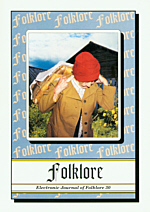Coitus in the Symbolic Language of Slavic Culture
Coitus in the Symbolic Language of Slavic Culture
Author(s): Alexandar GuraSubject(s): Customs / Folklore
Published by: Eesti Kirjandusmuuseum
Keywords: coitus; erotic folklore; erotic symbolism; euphemism; folklore; Slavic culture; symbolic meaning; customs
Summary/Abstract: Folk culture considers sexual intercourse unclean and dangerous and therefore applies many restrictions to it. Usually coitus is referred to with euphemisms and other substitutes that can be both neutral and expressive, or even humorous. Symbols of coitus in popular culture are numerous and diverse. Coitus is one of the most important objects of allegory among different types of human activity. In traditional popular culture it corresponds to a wide paradigm of behavioural symbols. The paradigm is built on the basis of motivating indicators reflecting the external properties of action: joining together, mobility, insertion, rhythm and repetitive action, oscillation, friction at close contact, etc. The basis of the symbolic meanings attributed to sexual intercourse as a means of magic of traditional popular culture is the similarity of physical sexual contact to social contacts (marriage, ritual relations), as well as metaphorical extrapolation of its natural result (conception of the fetus) to the results of human activity (harvest, cattle, big game hunting or fishing).
Journal: Folklore: Electronic Journal of Folklore
- Issue Year: 2005
- Issue No: 30
- Page Range: 135-154
- Page Count: 20
- Language: English

